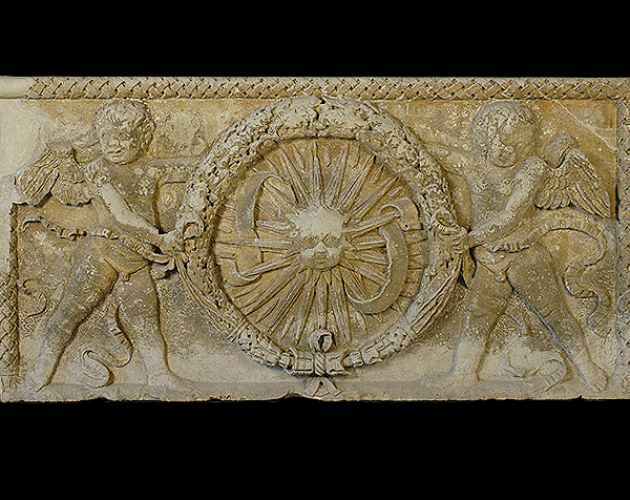The art displayed in the large Room of the Triumphs focuses the attention on Mantua during the Renaissance and the important architecture commissioned or patronized by the various princes of the Gonzaga family who gave the city its appearance: in particular Ludovico II, Francesco II and Federico II Gonzaga. All the works exhibited are from major historical buildings.
These mark the principal stages of an imaginary route known as the “prince’s way”, which crosses the city from north to south, beginning and ending at the key residences of the Gonzaga: Palazzo Ducale to the north and Palazzo San Sebastiano and Palazzo Te to the south. Between these, the main buildings, public and private, stand as testimony to both economic and religious power. They also document the gradual development of Mantua during a truly princely era fortunate enough to enjoy the work of artists including Andrea Mantegna, Leon Battista Alberti, Luca Fancelli and Giulio Romano.
The first part of the route - with two tondos bearing Gonzaga devices, Virgil Enthroned and four capitals from the Basilica di Sant’ Andrea - refers conceptually to the north of the city, which was the centre of aristocratic and religious power, while the last group of works on display – the balustrades, modillion, pair of Gonzaga coats of arms and a hanging corbel - refer instead to the area to the south. However , "the Prince’s city" was a far more comprehensive concept, as exemplified here by the Ginori coat of arms from Palazzo del Podestà, the sculptures from Palazzo Valenti, and the busts of Virgil, Battista Spagnoli and Francesco Gonzaga from the Porta Nuova arch.






